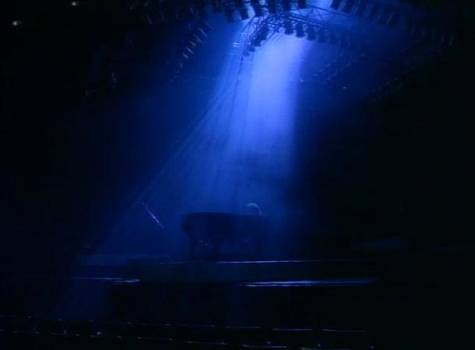
The Origin of the Kurdish Color (blue شین)
سه ر چاوه ی ره نگی کوردی شین
شین ره نگی ئاسمان و ئاوه - ره نگی چاوی جوانه - ره نگی شین و گریانه - برینت شینه – شین ره نگی هیمنیه - ره نگی پاک و خاوینیه - به لام وه ختی ته ماشای زمانه کانی ئیرانی تر ئه که یت نایبینیه وه. فارسی پی ئه لی (ئابی) وه کوو ره نگی ئاو. ئه وجا له کام لا هاتووه شین؟ شین هاتووه له صین / چین
The human perception of the color blue was either vage ranging from black to green and grey or it simply didn´t exisit at least linguistically in many languages.
The words for Chinese and blue have became synonymous in some Oriental languages. In Neo-Aramaic, the central hub of trade, the word for blue is siini صینی , and in Kurdish the word for blue is shiinشین . The Arabic word for Chinese is Siiniصینی
The context of the shift from Chinese Siini to the color blue shiin was due to the popular blue and white porcelain china commonly traded in the region. Oriental potters gave the name Siini China to the wares of the fine artistic quality which they made themselves.
The shift from the adjective Siini Chinese to blue in the meaning of vernacular Arabic Siini was provided by a dissemination of blue-on-white ceramics originally imported from China. The sound change from [s] to [sh] in Kurdish was probably due to the Kurdish word Chiin for China or to the fact that it was borrowed via Aramaic.
The word eventually became a term for blue and yielded a series of cognate color terms:
Iraqi Arabic: siiniصینی black (Weißbach 1930:338)
Negev Bed: siini blue, grey (Borg 1999)
Anatolian Arabic: shiini grün / Neo-Aram (Turoyo) shiin blau (Jastrow 1990:180) - Arbil shiin blue
Kurdish shiinشین blue (Blau 1965:224)
From Siini the Arabic neologism siiniyyaصينية was coined, referring to a large, round metal plate with raised brim, especially one made of copper, used as a baking tin or a food serving tray. The plural صواني still retains something of the original meaning: chinaware, porcelain vessels.
Aramaic and Persian were two dominant languages in Orient before Islam. Most Arabic words referring to trade were coined according to Aramaic pattern (Fa3-3aalفعّال ) as in naj-jaar نجّار carpenter, baq-qaal بقّال greengrocer, fal-laa7 فلّاح farmer. This means that even words like duk-kaan دكّان small shop, 7am-mam حمّامbathroom were originally trades not places of trade.
However, since the Arabs already borrowed the word azraq ازرق blue the from Persian لاجورد lajavard referring to lapis lazuli through trading with gems (compare Italian azzuro) and the fact that it occurs in Quran they continued using it as a word referring to blue. As usual such old borrowings were adapted to the Arabic word building system which lead to the coinage of the feminin form zarqaa? زرقاء.
From early times blue was the distinctive color of the dress of servants, which may be the reason police uniforms are blue
ئه زانی بوچی جلو به رگی پولیس شینه؟
جلو به رگی پولیس شینه چونکه له سه ره تاوه ره نگی جلو به رگی نوکه ر بوو له به ریتانیا
Jamshid
Bremen, 4 September 2016
Sources consultd
Anthropology of Color: Interdisciplinary multilevel modeling: Robert E. MacLaury,Galina V. Paramei,Don Dedrick
Jeffery Leech The Foreign Vocabulary of the Quran
Dictionaries
